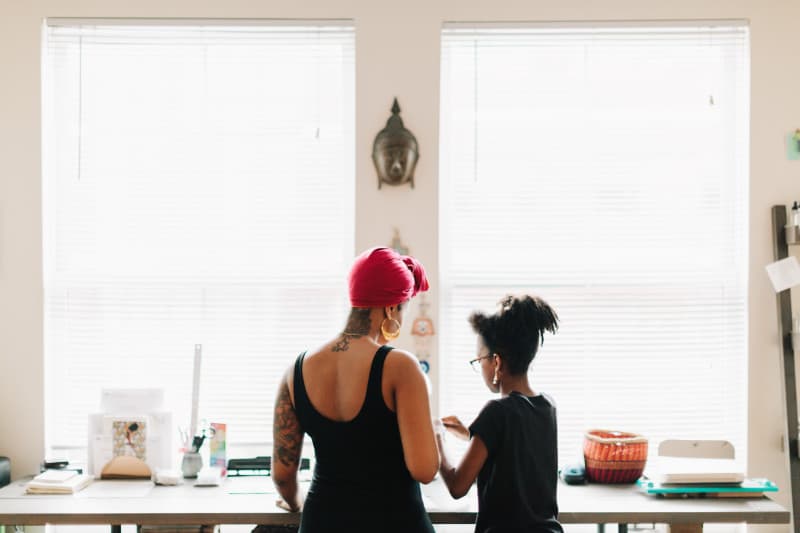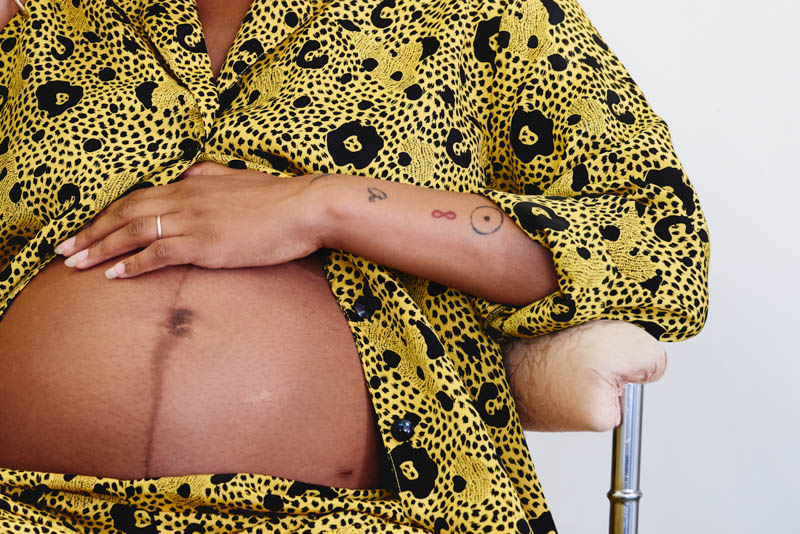
From Toddlers To Teenagers: How To Teach Self-Love
Written by Kimberly Mohns Roberts
Photography by Alex Elle, Photographed By Erika Layne
Self-love isn’t a trend, nor is it something that individuals won’t have to talk about years from now. The reoccurring theme of building one’s self-esteem has been long studied and discussed, but will likely be a practice that individuals must constantly work at. The journey toward self-love can be a rewarding one, but it can also be incredibly difficult. Someone who knows this journey personally is author, suicide survivor, and mother Kimberly Mohns Roberts. Below, the writer behind Just Perfect, a children’s book that focuses on building self-worth in young girls, demonstrates a few simple practices to help parents create healthy environments for their kids to foster a strong sense of self-love.
On a scale of 1 to 10, where would you rate your self-confidence? Do you love yourself? These questions may seem trivial, however, it’s vitally important to reflect on the answers because where you are in your own journey of self-love has the ability to impact your parenting, and in turn, can affect your child’s self-esteem.
And, while it may be a tough pill to swallow, in today’s fast-paced world it appears as though many individuals—parents or not—are on autopilot and may react to situations based on their own self-doubts. Involuntary defense mechanisms attempt to protect individuals from unwanted feelings—emotions that might go unnoticed, as many so often ignore some truths about themselves. While this may not have a seemingly tremendous impact in an adult life, it can have a significant influence on the children one raises. No one wants to hold their kids back from achieving their greatest potential. So, taking the time to recognize the type of environment one is creating for their kids—whether they be toddlers, teenagers, or somewhere in between—via their own insecurities is a significant piece of parenting effectively. Here are a few tips on how you can become more aware of the environment you may be fostering, no matter what age your children are.
Toddlers: Love thyself and they will, too
As a quick exercise, take a moment and look at yourself in the mirror. Did you smile when you saw your reflection? Perhaps, you flinched? Now, think about the doting toddler watching from behind. Parents are the first role models a child will have in their life. Whether you’re aware of it or not, they are going to be following behind you, absorbing everything they see. They watch as you put on your makeup or stare at your body in the mirror, treating these opportunities as life lessons. Before you ask your babysitter or husband how you look next time, or allow a self-deprecating comment to slip under your breath, maybe consider having these moments in private, or not at all. And, when you aren’t alone, look in the mirror and tell yourself you are just perfect the way you are. It may seem difficult, but your toddler is not just observing your physical movements, they’re also listening to you speak.
Don’t let the conversation stop with you, either. Talk to your toddlers about all the positive aspects that make them unique. Talk about how exercising is good for your bones and strengthens all the muscles in the body. The more you speak positively to them about their body, the more it will reinforce your own positive self-image. And, when you are done talking, take some selfies! Taking pictures with your child demonstrates that you aren’t afraid to capture yourself on camera—that you are confident and happy with yourself and being there with them in the moment.
Young children: Establishing healthy habits
So often, food and body image go hand-in-hand. And, between work and looking after a family, caring for oneself has the ability fall lower on the list of priorities. When one doesn’t find time to exercise or cook meals that fuel their bodies and make them feel their best, negative feelings can slip in. That said, a personal struggle with food or physical activity doesn’t need to be inherited by a child. Try to find the time to take care of yourself physically and emotionally, but also make time to create multiple opportunities for your children to interact with food in a healthy way. Below, are a few specific tips:
- Let your kids play with their food
- Let them tell you when they are full
- Set an example by eating your fruits and vegetables
- Teach them about vitamins and minerals
- Cook with your child, and learn to love the amazing flavors that can be created with healthy ingredients
Tweens: Don’t ground them before take-off
Imagine for a second the following scenario: Your daughter is preparing to enter high school, and you casually ask what she wants to do when she grows up. She replies, “I want to be an astronaut.” Back when she was five, that answer may not have been surprising. Now, she is 12, and while you didn’t necessarily think she had a clear-cut plan for her future, this answer may have caught you off-guard. If you choose to tell her that the odds are slim, or offer some alternative options, you may believe you’re navigating around what could potentially detour her from her eventual full-time career.
What your daughter may hear instead, however, is: “My parents don’t think I can do it. So, why should I?” Your child very well could be an astronaut. Someone out there is going to do it, and it could be your youngster. That said, encourage your kids to pursue their dreams, no matter what age they are. If your daughter is the one aspiring to become an astronaut, encourage her to take science electives in high school, or to join the math club. Be her cheerleader and her advocate. Expose her to as many opportunities as you can. She is the one who gets to decide what she is and isn’t capable of. Whether she actually becomes an astronaut or not is irrelevant. Your child is going to fall down and pick themselves back up many times throughout their entire life. The important part, as a parent, is that you don’t ground your children before take-off.
Teenagers: Money vs. self-love
When dropping your kids off at school, does it matter what car you are driving? Do you want or need that expensive item? What do you believe you will gain by purchasing it? Expensive buying habits have the ability to be an unconscious act to fill a void. An individual may be subconsciously looking to define their self-worth based on the value of material posessions. That’s not everyone, and that doesn’t mean they don’t deserve to buy themselves nice things, but one may need to consider the reasons why.
If you do decide to buy a new, high-end car, it might also be wise to think about the teenager that may be influenced by the purchase. Try and remind yourself and your child that you worked hard for this car, and that they, too, can earn the things they want. Money should be spent in a responsible manner, and material items do not define one’s self-worth. It’s an important lesson to remind both yourself and your kids, and to discuss when the time is appropriate.
Remember: parenting lasts a lifetime
Whether your children are toddlers or teenagers, chances are they won’t tell you that they look up to you, or that they care what you say. But, the odds are they still think of you as their hero, and what you say and do will continue to make an impact on their lives. So, take some time to think about your self-image and how it might affect how you parent in different situations. Remind yourself to be conscious and provide positive associations related to your own body, mind, and soul, alongside theirs. Raise your children to be a better version of yourself and chances are, it will rub off on your own personal views of self-love.
Finally, watch for signs of depression and low self-esteem in your child. While you’re a large influence on your kids, you’re not the only one. If you or your children need help, please seek professional services. The suicide helpline is: 1-800-273-8255.
For more on influencing your child’s self image, be sure to check out How To Boost Self-Esteem in Teenage Girls, Boys & Body Image, and Kids, Media, and Body Image.
Share this story




